Pseudospectra of Random Matrices:
Dense and Triangular Matrices
The spectral properties of dense nonsymmetric random matrices have been studied
since the 1960s. Consider the n-dimensional matrix A whose
entries are drawn from normal distribution with variance
n-1.
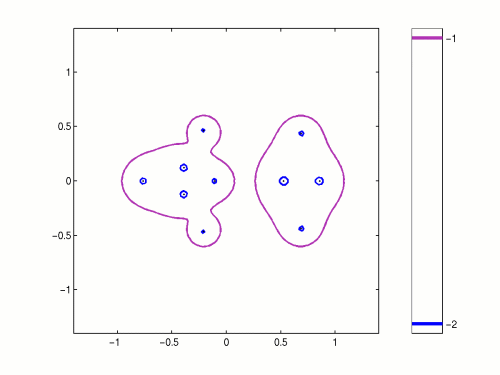
|
Figure 1. Dense random matrix with real entries, dimension N=10.
The values on the colorbar show log10(epsilon).
|
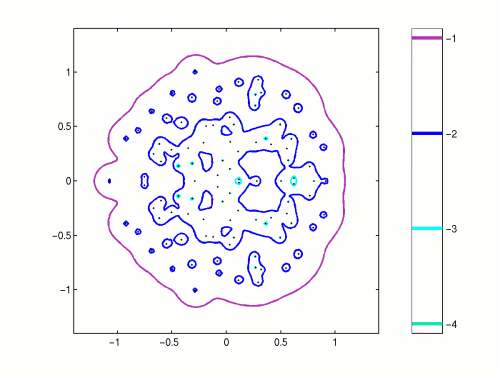
|
Figure 2. Dense random matrix with real entries, dimension N=100.
The values on the colorbar show log10(epsilon).
|
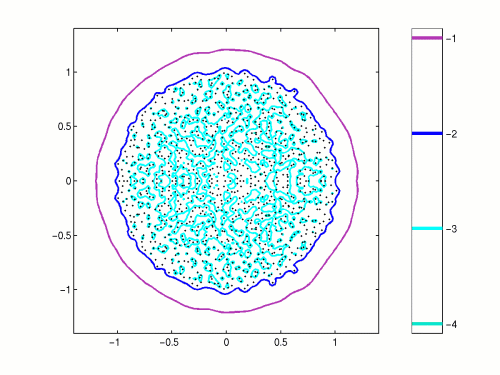
|
Figure 3. Dense random matrix with real entries, dimension N=1000.
The values on the colorbar show log10(epsilon).
|
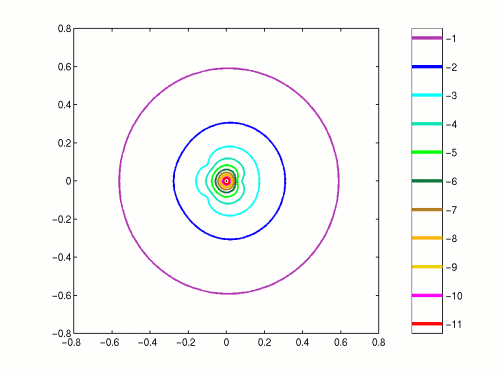
|
Figure 4. Strictly lower triangular random matrix with real entries, dimension N=10.
The values on the colorbar show log10(epsilon).
|
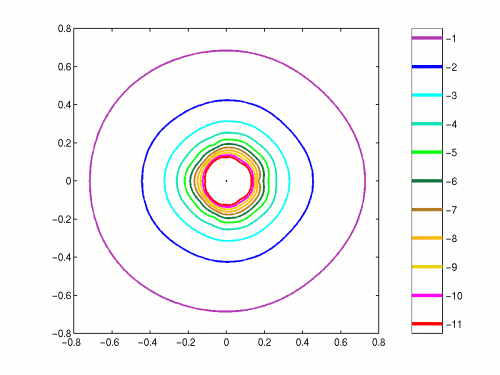
|
Figure 5. Strictly lower triangular random matrix with real entries, dimension N=100.
The values on the colorbar show log10(epsilon).
|
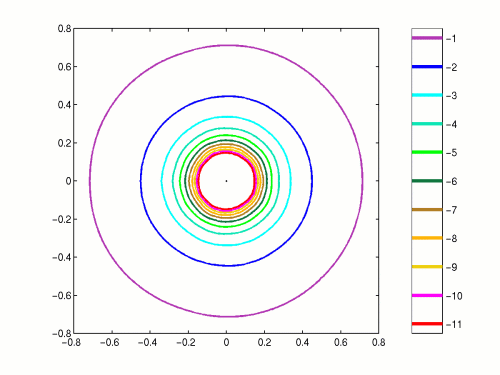
|
Figure 6. Strictly lower triangular random matrix with real entries, dimension N=1000.
The values on the colorbar show log10(epsilon).
|
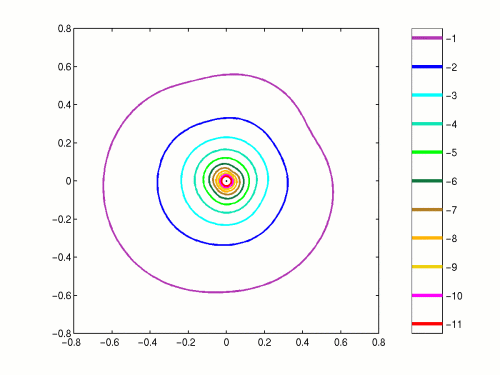
|
Figure 7. Strictly lower triangular random matrix with complex entries, dimension N=10.
The values on the colorbar show log10(epsilon).
|
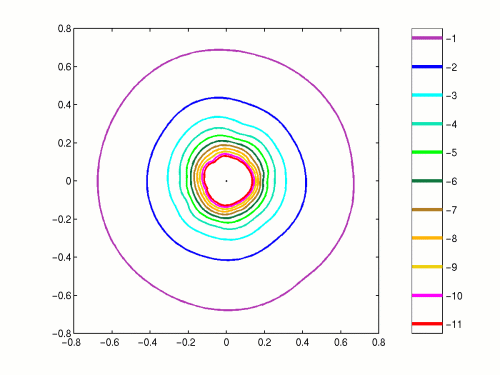
|
Figure 8. Strictly lower triangular random matrix with complex entries, dimension N=100.
The values on the colorbar show log10(epsilon).
|
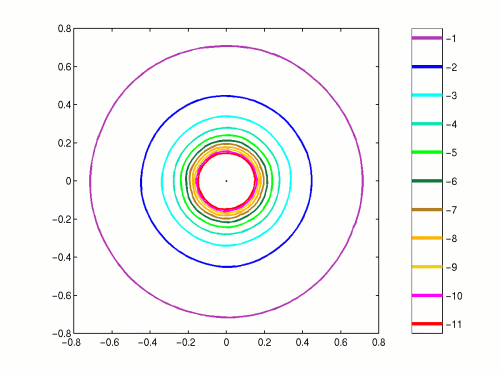
|
Figure 9. Strictly lower triangular random matrix with complex entries, dimension N=1000.
The values on the colorbar show log10(epsilon).
|
Bibliography
| [1] |
A. Edelman,
Eigenvalues and condition numbers of random matrices,
SIAM J. Matrix Anal. Appl. 9 (1988), 543-560. |
| [2] |
D. Viswanath and L. N. Trefethen,
Condition numbers of random triangular matrices,
SIAM J. Matrix Anal. Appl. 19 (1998), 564-581. |
|










